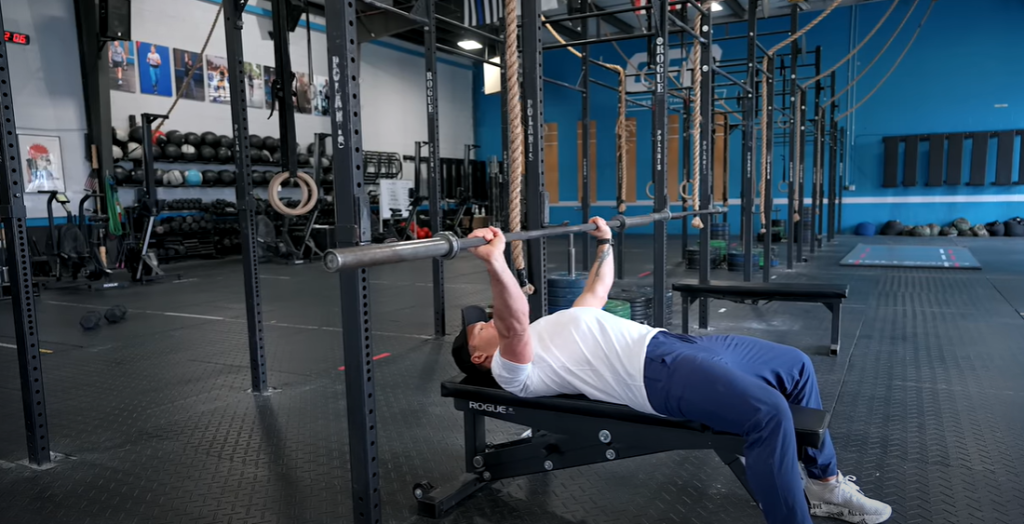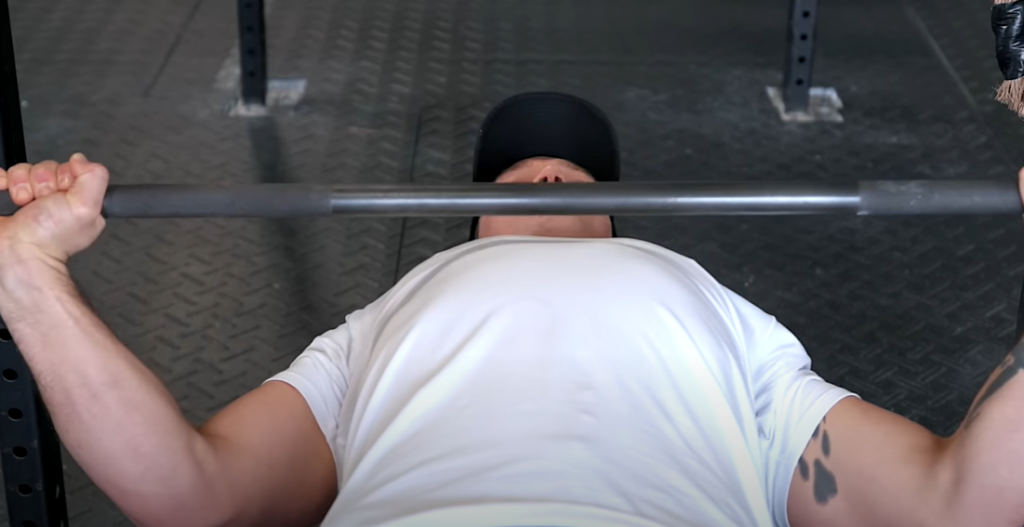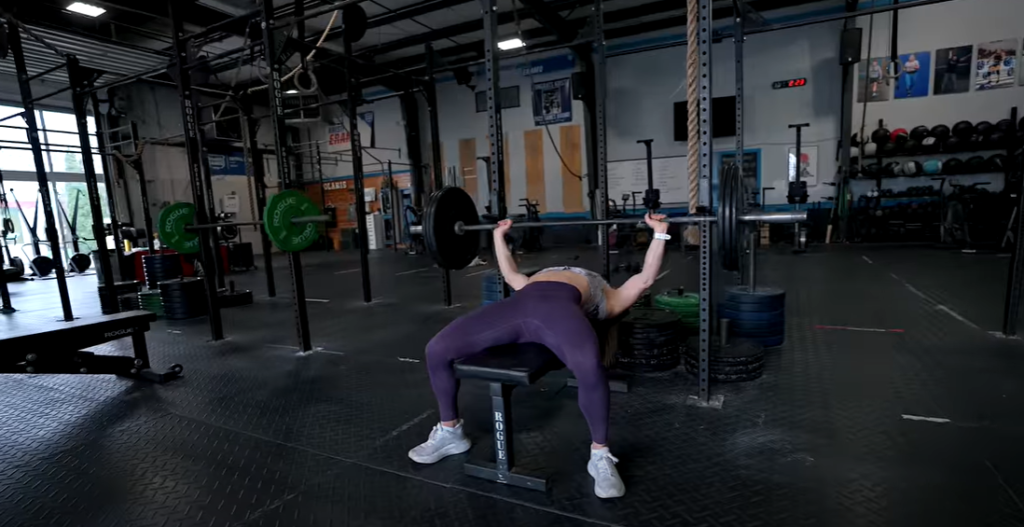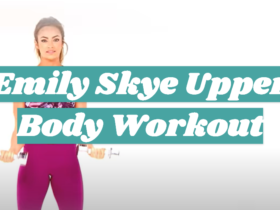Are you ready to take your upper body strength and fitness to the next level? Look no further than these insanely effective CrossFit workouts that specifically target your upper body. Whether you’re a CrossFit enthusiast or just starting out, these workouts will push you to your limits and leave you feeling strong, sculpted, and totally badass. Say goodbye to flabby arms and hello to defined muscles, because it’s time to get your sweat on and unleash the power of your upper body. Get ready to dominate those push-ups, pull-ups, and everything in between, as this article will take you on a journey for becoming a lean, mean, upper body machine.
What is a CrossFit Upper Body Strength Workout?
CrossFit is a dynamic and high-intensity fitness program that emphasizes functional movements and a wide variety of workouts. By integrating exercises from disciplines like weightlifting, gymnastics, running, rowing, and more, CrossFit offers a comprehensive and well-rounded approach to physical fitness. With a focus on building upper body strength as one of its key components, CrossFit provides individuals with a challenging and rewarding training experience. Whether you’re a beginner or an experienced athlete, CrossFit offers endless opportunities for growth, improvement, and achieving your fitness goals.
Additionally, these workouts often involve high intensity intervals or circuit training, incorporating exercises like burpees, kettlebell swings, and rowing, to increase cardiovascular endurance and enhance the metabolic response. The combination of compound exercises and intense intervals in a CrossFit upper body strength workout provides a comprehensive training approach that yields both physical and cardiovascular benefits.

Upper Body CrossFit Workout Benefits
CrossFit is a popular and intense type of workout that improves overall fitness by combining elements of high-intensity interval training, weightlifting, calisthenics, and other exercises. CrossFit workouts are divided into different sections called “WODs” or “Workout of the Day,” which focus on strengthening different muscle groups and improving cardiovascular endurance. Here are some reasons why you should incorporate CrossFit into your workout routine:
1. Builds Stronger Arms
One of the primary objectives in CrossFit is to develop and strengthen the muscles in your arms through a wide range of exercises. These exercises encompass a variety of movements, including push-ups, pull-ups, and rowing, which engage and target multiple muscle groups in your arms, such as the biceps, triceps, and forearms. By consistently incorporating these movements into your CrossFit workouts, you can anticipate not only an increase in muscle mass and definition in your upper body but also an improvement in overall upper body strength and functionality. This enhanced strength will not only benefit your performance in CrossFit but also have positive implications for various daily activities and tasks that require upper body strength and endurance. So, get ready to witness impressive gains and a more sculpted upper body as you embark on your CrossFit journey!
2. Increases Core Strength
In addition to enhancing overall fitness, CrossFit places a significant emphasis on core strength. Through a variety of exercises such as planks, sit-ups, and Russian twists, this high-intensity training method targets and strengthens the muscles in your core. These muscles, including the abdominals, obliques, and lower back, play a crucial role in providing stability and balance during both everyday activities and sports. By developing a strong core, you not only reduce the risk of injuries but also enhance your athletic performance, enabling you to excel in various physical pursuits.

3. Improves Cardiovascular Endurance
CrossFit workouts are known for their incorporation of high-intensity interval training (HIIT). HIIT involves engaging in short bursts of intense exercise, pushing your limits, and then allowing brief periods of rest or lower intensity activity to recover. This dynamic training method has been extensively studied and proven to yield significant benefits.
The cumulative effect of this type of training is improved overall fitness and performance in various physical activities. Whether it’s running, cycling, or any other sport, the benefits of incorporating HIIT into your routine are undeniable. Embrace the challenge, push your limits, and watch your fitness soar to new heights!
4. Promotes Functional Movement
CrossFit workouts are meticulously crafted to replicate and simulate the functional movements we encounter in our daily lives. From squatting and lifting to pushing and pulling, these exercises encompass the essence of our everyday activities. By engaging in these workouts at a high intensity, we not only enhance our strength but also train our bodies to move with greater efficiency and effectiveness in various tasks we encounter throughout the day. This comprehensive approach to fitness allows us to tackle our daily routines with newfound vigor and resilience.
5. Challenges Your Body and Mind
One of the most significant benefits of CrossFit is the mental challenge it provides. Each workout is carefully designed to be unique and diverse, encompassing a wide range of exercises that demand unwavering focus, unwavering determination, and unwavering perseverance. By constantly pushing the boundaries of your physical and mental capabilities, you can unlock new levels of strength, resilience, and endurance that you never thought possible. The mental fortitude developed through CrossFit translates into everyday life, empowering you to overcome obstacles, tackle challenges head-on, and achieve greatness in all aspects of your journey. Embrace the mental challenge of CrossFit and witness the transformative power it can have on your mind, body, and spirit.

CrossFit for Beginners – Upper Body Workout Examples
Lynne
Lynne is a popular workout among CrossFit enthusiasts. It is a bodyweight and weightlifting workout that focuses on the upper body muscles, specifically the chest, back, shoulders, and arms. This workout is a great way for beginners to build strength and muscle in their upper body.
To perform Lynne, you will need a barbell with weights, a pull-up bar or resistance bands, and a timer. The goal of this workout is to complete five rounds of the following exercises:
- Bench press (bodyweight)
- Pull-ups (maximum reps)
Beginners can modify this workout by using lighter weights or resistance bands for the bench press and assisted pull-ups if they are unable to do regular pull-ups yet. You can also use dumbbells instead of a barbell for the bench press if that is more comfortable for you.
Start by setting your timer for three minutes. Begin with the bench press and aim to complete as many reps as possible in the three minutes. Rest for one minute, then move on to pull-ups and again aim for maximum reps within the three-minute time frame. Repeat this process for five rounds.
The key to success with Lynne is pacing yourself and pushing through the fatigue. Don’t be discouraged if you can’t complete as many reps in each round, focus on maintaining good form and giving your best effort.
Overhead Hell
As the name suggests, this workout is not for the faint of heart. It is a challenging upper body workout that primarily targets your shoulders and arms.
To perform Overhead Hell, you will need a barbell with weights and a timer. The goal of this workout is to complete five rounds of the following exercises:
- Push press (bodyweight)
- Overhead squat (maximum reps)
Again, beginners can modify this workout by using lighter weights or dumbbells instead of a barbell for both exercises.
Start by setting your timer for three minutes. Begin with the push press and aim to complete as many reps as possible in the three minutes. Rest for one minute, then move on to overhead squats and again aim for maximum reps within the three-minute time frame. Repeat this process for five rounds.
This workout will definitely challenge your upper body strength and endurance, but it is a great way to build muscle and improve your overall fitness level.

CrossFit Upper Body Barbell Complex
A barbell complex is a series of exercises performed back to back without resting in between. This CrossFit upper body barbell complex is a quick and efficient way to work your entire upper body.
To perform this workout, you will need a barbell with weights and a timer. The goal is to complete three rounds of the following exercises:
- Bent-over row (8 reps)
- Hang power clean (6 reps)
- Push press (4 reps)
- Front squat (2 reps)
Rest for one minute in between each round. Beginners can modify this workout by using lighter weights or starting with fewer reps for each exercise. The key to completing this complex is maintaining good form and not rushing through the movements. Take your time and focus on engaging the targeted muscles for each exercise [1].
Upper Body Crossfit Workout At Home
DB Thruster/Pull ups
The DB thruster and pull ups combination is a classic CrossFit workout that targets multiple muscle groups in the upper body. To perform this workout, you will need a set of dumbbells and a pull up bar.
- Start by standing with your feet shoulder-width apart, holding a dumbbell in each hand at shoulder height.
- Squat down until your thighs are parallel to the ground.
- As you stand back up, use the momentum to press the dumbbells overhead into a shoulder press.
- Lower the dumbbells back to starting position and repeat for 10-12 reps.
- After completing the thrusters, move on to the pull ups.
- Grab onto a pull up bar with an overhand grip and your hands shoulder-width apart.
- Pull yourself up, keeping your elbows close to your body, until your chin is above the bar.
- Slowly lower yourself back down and repeat for 10-12 reps.
- Rest for one minute and then repeat the circuit for a total of 3 sets.
This workout targets the shoulders, chest, arms, and back muscles. It also incorporates cardio by combining squats with overhead presses. By using dumbbells instead of a barbell, you engage more stabilizing muscles in addition to the main muscle groups being targeted.

Push Up Variations
Push ups are a staple in any upper body workout, but there are many variations that can make them more challenging and target different muscle groups. Here are a few variations to try:
- Wide Grip Push Ups – Place your hands wider than shoulder-width apart to engage the chest muscles more.
- Diamond Push Ups – Bring your hands close together in a diamond shape under your chest to target the triceps.
- Decline Push Ups – Elevate your feet on a sturdy surface, such as a chair or bench, to increase the difficulty and engage the shoulders and upper chest.
- Incline Push Ups – Place your hands on an elevated surface, such as a step or bench, to decrease the difficulty and focus on proper form and engagement of the back muscles.
- One Arm Push Up – This advanced variation requires one arm to be placed behind your back while the other arm performs the push up.
Incorporating different variations of push ups in your workout can help prevent plateauing and target different muscle groups for a well-rounded upper body workout.
Burpees
No CrossFit workout is complete without burpees. This full-body exercise not only targets the upper body, but also engages the core and legs.
- Start by standing with your feet shoulder-width apart.
- Squat down and place your hands on the ground in front of you.
- Kick your feet back into a plank position, keeping your arms extended.
- Perform a push up, lowering yourself until your chest touches the ground.
- Push yourself back up into a plank position.
- Jump your feet back in towards your hands and stand back up.
- To increase the intensity, add a jump at the end of the movement.
Complete 10-12 reps for 3 sets with one minute rest in between each set. Burpees are an efficient full-body exercise that can be incorporated into any workout routine to boost cardiovascular endurance and strengthen the upper body muscles.
Upper Body AMRAP Crossfit Workouts
Upper Body Workout “Cindy” Style CrossFit WOD
This workout is inspired by the popular CrossFit girl WOD known as “Cindy”. It focuses on upper body strength and endurance, incorporating a combination of pull-ups, push-ups, and air squats. The objective of this workout is to complete as many rounds as possible (AMRAP) in a given time frame.
Workout Details:
- 20-minute time cap
- 5 pull-ups
- 10 push-ups
- 15 air squats
The goal is to complete as many rounds as possible within the 20-minute time cap. As with any CrossFit workout, form and technique should always be prioritized over speed. This will help prevent injury and ensure maximum efficiency during the workout.
AMRAP “Cindy”, Bro Style
Similar to the previous workout, this one also takes inspiration from “Cindy”. However, it is designed for those who may not have access to a pull-up bar or may struggle with pull-ups. Instead of pull-ups, this workout incorporates dumbbell rows.
Workout Details:
- 20-minute time cap
- 5 dumbbell rows (each arm)
- 10 push-ups
- 15 air squats
The focus on upper body strength and endurance remains the same in this workout. The use of dumbbell rows allows for a similar motion as pull-ups but can be performed with equipment that is more readily available in most gyms.
Ascending Ladder AMRAP CrossFit WOD
This workout follows an ascending ladder format, where the number of reps for each exercise increases with each round. This not only challenges upper body strength and endurance but also adds a mental challenge as the workout progresses.
Workout Details:
- 20-minute time cap
- Round 1: 2 pull-ups, 4 push-ups, 6 air squats
- Round 2: 4 pull-ups, 8 push-ups, 12 air squats
- Round 3: 6 pull-ups, 12 push-ups,18 air squats
Continue this pattern until the time cap is reached or until you are unable to complete a full round within the given time frame. This workout can be modified by increasing or decreasing the number of reps in each round depending on individual fitness levels.

How Often Do You Need to Train Your Upper Body?
It is a common misconception that training your upper body needs to be done every day. In reality, the recommended frequency for training your upper body depends largely on your goals and current fitness level.
For most people, it is sufficient to train their upper body 2-3 times per week. This allows for enough rest and recovery time in between sessions while still providing enough stimulus for muscle growth and strength gains.
However, if your goal is to build significant muscle mass or increase strength significantly, you may need to increase the frequency of training. This could mean training your upper body up to 4-5 times per week, with proper rest and recovery strategies in place.
On the other hand, if you are just starting out or have a busy schedule, training your upper body once a week may still provide some benefits. However, it is important to note that progress and results may be slower compared to more frequent training.
It is also worth mentioning that the exercises and intensity of your upper body workouts will play a role in determining the frequency of training. For example, if you are performing high-intensity exercises like heavy weightlifting or plyometrics, you may need more rest days in between sessions to allow for proper recovery.
In summary, how often you should train your upper body depends on various factors such as your goals, fitness level, and type of exercises performed. It is important to listen to your body and adjust accordingly to avoid overtraining while still making progress towards your goals. Remember, consistency is key, so finding a sustainable training frequency that works for you is crucial for long-term success. So, it is important to find a balance and listen to your body in order to achieve the best results. Experiment with different frequencies and adjust as needed until you find the right fit for your individual needs [2].
FAQ
How to train shoulder muscles?
To train your shoulder muscles effectively, it is important to focus on a variety of exercises that target different areas of the shoulders. Some recommended exercises include:
- Shoulder presses: This exercise can be done with dumbbells, barbells, or resistance bands. It primarily targets the front and middle deltoid muscles.
- Lateral raises: This exercise targets the side deltoid muscles and can also be done with dumbbells, barbells, or resistance bands.
- Rear delt flyes: These can be done using dumbbells or a cable machine to target the rear deltoids.
- Push-ups: Although push-ups are often associated with chest training, they also engage the shoulders as stabilizer muscles.
- Pull-ups/chin-ups: These exercises engage the shoulders as well as the back muscles.
- Planks: Planks not only work your core but also engage the stabilizer muscles in your shoulders.
It is important to gradually increase the weight and resistance used in these exercises to continue making progress. Additionally, incorporating different variations such as incline or decline exercises can also help target different parts of the shoulder muscles.
Consistency and proper form are key when it comes to training shoulder muscles. It is recommended to train shoulders 1-2 times per week with at least 48 hours of rest between sessions. Focus on using a controlled and full range of motion for each exercise, rather than just lifting heavy weights with poor form.
What are the mistakes you can make by training in a gym?
There are a few common mistakes that people make when training in a gym, which can hinder their progress and potentially lead to injury. First, not warming up properly before a workout can increase the risk of injury. It is important to gradually warm up your muscles and joints through dynamic stretching or light cardio before jumping into your main workout.
Another mistake is using improper form while performing exercises. This not only makes the exercise less effective but also increases the risk of injury. It is important to focus on proper form and range of motion rather than just lifting heavy weights.
Additionally, neglecting rest and recovery can also be detrimental to progress. Your muscles need time to repair and grow after a tough workout, so it’s important to have rest days built into your training plan. Overtraining can lead to fatigue, injuries, and plateauing in progress.
Lastly, having unrealistic expectations or comparing yourself to others in the gym can also be a mistake. Everyone’s body is different and progresses at their own pace. It’s important to focus on your own journey and make progress based on your individual goals and abilities.
Useful Video: THE ULTIMATE UPPER BODY WORKOUT – PUSH – PULL PUMP SESSION
Conclusion Paragraph
So, Upper-Body CrossFit workouts can undeniably improve your overall health and fitness. By incorporating these exercises into your regular workout routine, you can see improvements in strength, endurance, and flexibility. Additionally, it is a great way to challenge yourself and keep your workouts interesting. However, as with any physical activity, it is important to listen to your body and pace yourself appropriately. It is always advisable to consult with a medical professional before starting any new fitness program, especially if you have any existing injuries or health conditions.
References:
- https://athleticmuscle.com/upper-body-crossfit-workouts/
- https://greatist.com/health/how-often-should-you-work-out









Leave a Review